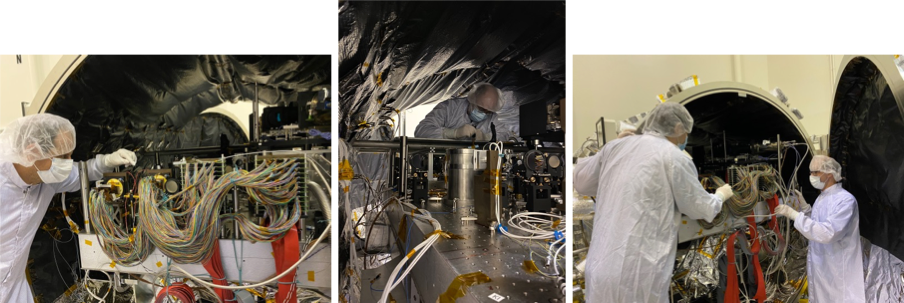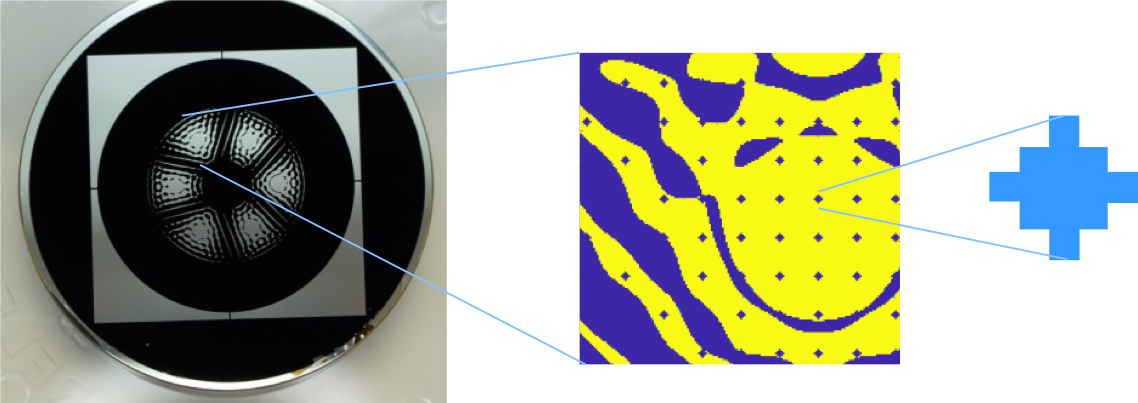PROJECT
Multi-star Wavefront Control (MSWC)
SNAPSHOT
Multi-star wavefront control technology enables imaging planets in systems with multiple suns (such as Alpha Centauri, the nearest star system to us) and searching them for signs of life.

For millennia, people have wondered if life exists elsewhere in the universe. To answer this question, we need to directly image exoplanets (planets orbiting stars other than the Sun) and search them for signs of life. Many nearby stars, however, reside in multi-star systems (i.e., systems with more than one star). In fact, Sun-like stars are more likely to be in multi-star systems—such as Alpha Centauri, the nearest star system to the Sun—than be single stars like our Sun. Therefore, to detect life we will likely need to image exoplanets in these multi-star systems. A newly developed technology, Multi-Star Wavefront Control (MSWC), provides just this kind of capability.
Planets are much dimmer than stars and typically light from nearby stars must be suppressed to image them. Broadly speaking, instruments that suppress starlight inside the telescope are called coronagraphs and those that do it externally are called starshades.
NASA’s next flagship telescope will be the Nancy Grace Roman Space Telescope, scheduled to launch by May 2027, and will include a technology demonstration of a coronagraphic instrument capable of imaging large planets near their host stars. NASA is also embarking on the development of the next flagship after Roman, provisionally named the “Habitable Worlds Observatory.” Recommended by the 2020 Decadal Survey in Astronomy and Astrophysics, this flagship will address the guidance to identify at least 25 Earth-like planets and characterize them for evidence of life. In addition, NASA may select smaller missions that support the objective of discovering and characterizing habitable planets.
Although binary stars are scientifically a very attractive class of targets for such missions (especially Alpha Centauri), they present a technical challenge because light from both stars needs to be suppressed to image any nearby planets. Using a combination of a coronagraph and/or starshade to suppress light from each star is not optimal because of the added cost and risk. In addition, current coronagraphic systems can suppress starlight around an individual star, but cannot suppress the cross-contamination of starlight between stars. Eliminating this cross-contamination is the key challenge that must be overcome to image planets around binary star systems.
Multi-Star Wavefront Control (MSWC) was developed to address this challenge. Invented at NASA Ames in 2014, it relies on two innovations that work together. The first is a way to control a deformable mirror (DM) to suppress light from two stars independently. This is done by using two different sets of shapes (spatial frequency modes) on the DM for different stars. The second technique, called “super-Nyquist wavefront control,” is a way to enable deformable mirrors to suppress starlight beyond their normal limits by using a special "mild grating,” shown as a grid of blue dots in the image below. Normally, a DM can only suppress starlight in a small region around a star, like a single tent pole (the star) supporting a small tent (DM control region). This poses a problem when imaging binary stars, because a typical DM can only suppress starlight from both stars if those stars’ two regions overlap. However, binary stars tend to be far apart, so there is no overlap, like two small tents that are far away from each other. The mild grating solves this problem by creating a grid of faint copies of the second star (so-called “diffraction orders”), extending the reach of the DM to a much larger region around each star, similar to how a grid of tent poles can support a larger tent than a single pole. Using these two techniques, a coronagraph can overcome cross-contamination and increase the starlight contrast to image exoplanets in binary star systems.
Because deformable mirrors will be present in essentially all future coronagraphic mission concepts, MSWC is compatible with most of them, without requiring a major instrument redesign. This compatibility enabled MSWC to be accepted as a contributed mode on the Roman Space Telescope’s Coronagraph Instrument, with only slight modifications of the single-star instrument masks. Testing MSWC on the sky with Roman’s coronagraph will demonstrate this important technology to enable imaging of exoplanets in binary star systems, and has the potential to detect planets around binaries like Alpha Centauri.
The MSWC team has been steadily maturing the technology through simulations as well as demonstrations at the Ames Coronagraph Experiment Laboratory and on the Subaru Coronagraphic Extreme Adaptive Optics (SCExAO) instrument on the Subaru Telescope—a ground-based telescope operated by the National Astronomical Observatory of Japan. Also, over the past few years, the team extended MSWC testing to the High Contrast Imaging Testbed (HCIT) at NASA’s Jet Propulsion Laboratory (JPL), a state-of-the-art facility for high-contrast demonstrations in vacuum.

MSWC has made significant strides, demonstrating the basic feasibility of suppressing starlight from more than one star, as well as doing so for stars that are separated beyond the conventional limits of deformable mirrors. Now, the team is hard at work to increase the performance, ultimately to levels required for detecting Earthlike planets.
“Just imagine -- when you go outside and look at a star in the night sky, you might be looking at a planet just like the Earth, hidden in the star’s glare,” said Ruslan Belikov, the project lead for MSWC. “Also, chances are that the star you’re looking it is a multi-star system. I just can’t wait until we lift veils of starlight to unlock the secrets that lie on the planets within.”
Acknowledgment: This work was supported by NASA Internal Scientist Funding Model (ISFM) program and led by the NASA Ames Research Center. A portion of this research was carried out at the Jet Propulsion Laboratory, California Institute of Technology, under a contract with the National Aeronautics and Space Administration (80NM0018D0004).
PROJECT LEADS
Dr. Ruslan Belikov, NASA Ames Research Center (Principal Investigator) and Dr. Eduardo Bendek (Institutional PI), NASA Jet Propulsion Laboratory.
SPONSORING ORGANIZATION
NASA Astrophysics Division (Internal Scientist Funding Model/ Strategic Astrophysics Technology [SAT])
Read more Technology Highlights


































